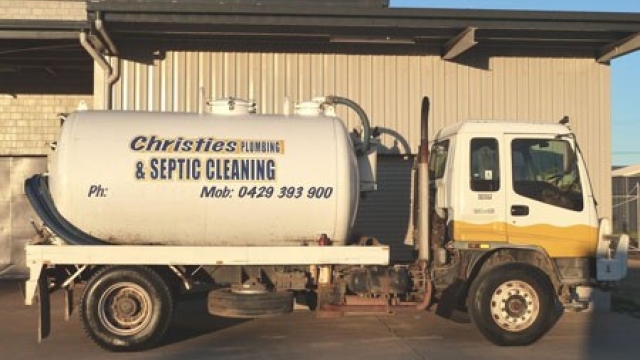Plumbing and septic systems are essential components of our homes’ infrastructure. While they often go unnoticed, they play a crucial role in ensuring that our daily lives run smoothly. From providing clean, running water to safely disposing of waste, a well-maintained plumbing and septic system is vital for the comfort and health of our households.
However, even the best systems can encounter issues over time. Leaky faucets, clogged drains, and malfunctioning septic tanks are common problems that can cause significant inconvenience and frustration. In this article, we will delve into the depths of plumbing and septic systems, exploring the most common troubles that homeowners face and offering practical advice on how to troubleshoot and resolve them. So, whether you’re a DIY enthusiast looking to tackle plumbing and septic mishaps on your own or someone seeking a better understanding of these intricate systems, join us as we navigate the challenges and solutions of the plumbing and septic world.
Common Plumbing Issues
-
Leaky Faucets: One of the most common plumbing problems is a leaky faucet. The constant dripping not only wastes water but also leads to annoying noises. Leaks can occur due to worn-out washers, damaged seals, or loose connections. To fix this issue, start by turning off the water supply to the faucet. Then, disassemble the handle and replace any faulty parts. Finally, reassemble everything, turn on the water, and bid farewell to that pesky drip!
- Mandeville Plumber
Clogged Drains: Dealing with a clogged drain is never fun. Whether it’s in the kitchen or bathroom, a clog can disrupt your daily routine. Most clogs occur due to a buildup of food remnants, grease, hair, or other debris. A plunger can often do the trick, utilizing suction to dislodge the blockage. For tougher clogs, you may need to use a plumbing snake or a drain cleaning solution. Regular maintenance and avoiding the disposal of non-flushable items down the drain can help prevent this issue.
-
Running Toilet: If you’ve ever heard your toilet mysteriously running long after you’ve flushed, it’s likely due to a faulty flapper valve or an issue with the float mechanism. To fix this, remove the toilet tank lid and inspect the components. If the flapper is not sealing properly, it may need to be replaced. If the float is not adjusting water levels correctly, it may need to be readjusted or replaced as well. By addressing these toilet mysteries, you can eliminate the constant running and potential water waste.
Remember, while these common plumbing issues may seem daunting, don’t hesitate to seek professional help if needed.
Maintaining a Healthy Septic System
Regular maintenance of your septic system is crucial to ensure its proper functioning and to avoid costly repairs or replacements. By implementing a few simple practices, you can help sustain the health and longevity of your septic system.
Firstly, be mindful of what goes down your drains. Avoid flushing non-biodegradable items, such as wet wipes, diapers, or feminine hygiene products, as they can clog the septic system and lead to blockages. Additionally, refrain from pouring grease or oils down the drain, as they can solidify in the septic tank and hinder its effectiveness.

Secondly, conserve water whenever possible. Excessive water usage can overload the septic system and disrupt its natural processes. Consider repairing any leaky faucets or toilets promptly, as even minor leaks can contribute to an unnecessary strain on your septic system. Moreover, spacing out water-intensive activities, like laundry or dishwashing, throughout the week can prevent the system from becoming overwhelmed.
Lastly, regular inspections and pumping are essential components of septic system maintenance. Schedule periodic inspections by a professional to assess the condition of your system and identify any potential issues early on. Based on the inspector’s recommendations, establish a pumping schedule tailored to your household’s usage and the size of your septic tank. Pumping removes accumulated solids from the tank, preventing them from overflowing into the drain field and causing system failure.
By following these guidelines and taking a proactive approach to septic system maintenance, you can enjoy a trouble-free and long-lasting plumbing system for years to come. Remember, a healthy septic system means a healthier environment and peace of mind for you and your family.
Tips for DIY Troubleshooting
- Start with the basics:
When facing plumbing or septic issues, it’s important to begin by checking the most obvious culprits. Begin by inspecting all visible pipes for leaks or signs of damage. Additionally, make sure all faucets are fully turned off and that there are no running toilets. These simple checks can often identify easy-to-fix problems before delving any further into troubleshooting.
- Utilize common household tools:
Most DIY plumbing and septic troubleshooting can be accomplished using basic household tools. Keep a plunger handy to tackle clogged drains or toilets. A set of adjustable wrenches will come in handy for tightening and loosening connections. Additionally, a pipe snake or auger can be used to clear minor blockages in drains. By having these tools at your disposal, you’ll be equipped to handle many common plumbing and septic issues.
- Know when to seek professional help:
While DIY troubleshooting can resolve many plumbing and septic problems, it’s crucial to recognize when it’s time to call in the professionals. If you encounter a complicated issue that you’re unsure how to handle or if you attempt multiple troubleshooting methods without success, it’s best to reach out to a licensed plumber or septic system professional. They have the necessary expertise and equipment to diagnose and solve more complex problems, ensuring a thorough and lasting solution.
Remember, when it comes to plumbing and septic troubleshooting, safety should always be a top priority. If you ever feel unsure or uncomfortable with a task, it’s better to seek professional assistance rather than risking further damage or injury.
